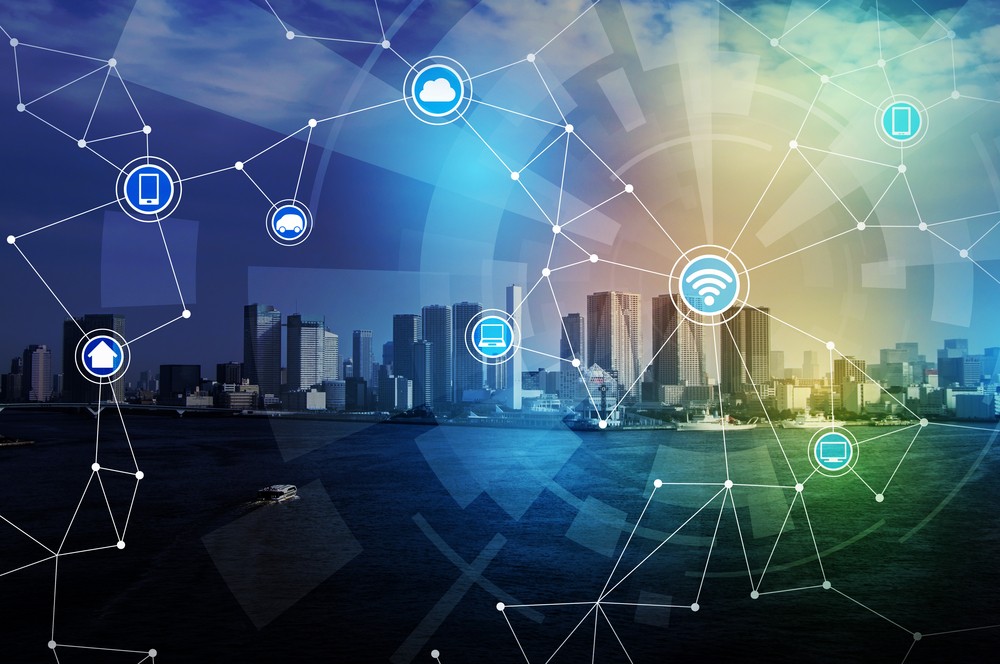The world of retail IoT device development is rapidly evolving, offering a transformative shopping experience for consumers and businesses alike. With the integration of the Internet of Things (IoT) into retail, businesses are able to collect valuable data, improve customer experiences, and enhance operational efficiency. This article delves into the various aspects of retail IoT device development, exploring how it is changing the face of retail.

Understanding Retail IoT
Retail IoT refers to the use of interconnected devices that communicate and exchange data to optimize the retail experience. These devices range from smart shelves to automated checkouts, providing retailers with real-time insights into customer behavior and inventory levels.
The Role of IoT in Retail
IoT plays a crucial role in retail by providing businesses with the tools to streamline operations, personalize customer interactions, and enhance supply chain management. The integration of IoT devices allows retailers to offer a seamless shopping experience, both online and in-store.
Benefits of IoT in Retail
The benefits of IoT in retail are manifold. Businesses can better manage inventory, reduce costs, and improve customer satisfaction. For example, smart shelves can automatically update inventory levels, while IoT-enabled beacons can provide personalized promotions to customers in real-time.
Key Components of Retail IoT Device Development
Retail IoT device development involves several key components, each playing a vital role in the overall functionality of the system.
Sensors and Devices
Sensors and devices are the backbone of IoT systems. They collect data from the physical environment and transmit it to a centralized system for analysis. In retail, these can include RFID tags, cameras, and smart shelves.
Connectivity
Connectivity is essential for IoT devices to communicate. Retailers use various technologies such as Bluetooth, Wi-Fi, and cellular networks to ensure seamless data exchange between devices and systems.
Data Processing and Analytics
Data processing and analytics are critical in transforming raw data into actionable insights. Retailers use advanced analytics tools to interpret data and make informed decisions that enhance customer experiences and streamline operations.
User Interface
The user interface is where the consumer interacts with IoT devices. Retailers must ensure that interfaces are user-friendly and intuitive to enhance customer engagement and satisfaction.
Challenges in Retail IoT Device Development
Despite its numerous benefits, retail IoT device development faces several challenges that businesses must overcome to fully realize its potential.
Security Concerns
As IoT devices collect sensitive data, security is a major concern for retailers. Businesses must implement robust security measures to protect customer information and prevent data breaches.
Interoperability Issues
Interoperability is crucial for the seamless integration of IoT devices. Retailers often face challenges in ensuring that devices from different manufacturers can communicate effectively. For more insights, visit IoT Interoperability.
Cost of Implementation
The cost of implementing IoT systems can be high, particularly for small retailers. Businesses must weigh the potential benefits against the costs to determine if IoT is a viable investment.
Future Trends in Retail IoT
The future of retail IoT device development is bright, with several exciting trends on the horizon.
Artificial Intelligence Integration
Artificial intelligence is set to play a significant role in the future of retail IoT. AI can enhance data analysis, enabling retailers to offer more personalized experiences and improve decision-making.
Augmented Reality Experiences
Augmented reality (AR) is another emerging trend in retail IoT. AR can enhance the shopping experience by providing customers with interactive and immersive experiences, both online and in-store.
Enhanced Customer Engagement
Future IoT developments will focus on enhancing customer engagement by providing more personalized and interactive experiences. Retailers will use IoT to create a more connected and convenient shopping experience.
Conclusion
In conclusion, retail IoT device development is revolutionizing the retail industry, offering numerous benefits to businesses and consumers alike. By overcoming current challenges and embracing future trends, retailers can leverage IoT to enhance the shopping experience and drive business success.

FAQs
What is retail IoT?
Retail IoT involves the use of interconnected devices to improve the retail experience, offering benefits such as improved inventory management and personalized promotions.
How does IoT benefit retailers?
IoT benefits retailers by streamlining operations, enhancing customer experiences, and providing valuable data for decision-making.
What are the challenges in retail IoT?
Challenges in retail IoT include security concerns, interoperability issues, and the cost of implementation. Learn more about these challenges at IoT Interoperability.
For more insights on IoT developments, check out this external resource.


